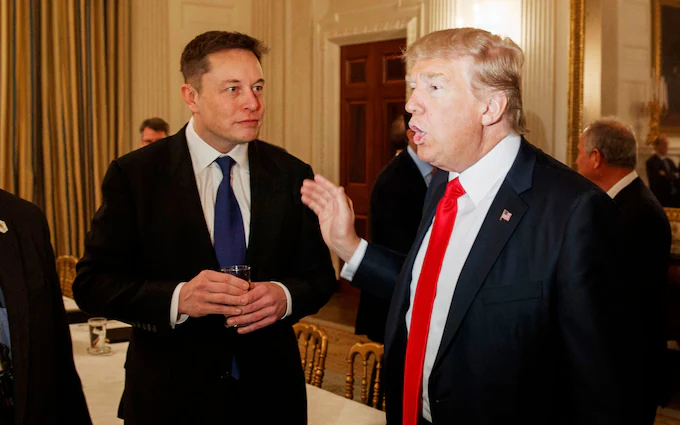Billionaire tech mogul, Elon Musk, has announced his departure from the Trump administration, bringing an end to a controversial chapter in the United States governance marked by aggressive budget cuts and mass layoffs.
Musk, who held a temporary position as a Special Government Employee, helped oversee the Department of Government Efficiency, ironically dubbed “Doge”, an agency tasked with drastically reducing federal spending and bureaucracy.
In a post on his social media platform, X, Musk confirmed his exit, “As my scheduled time as a Special Government Employee comes to an end, I would like to thank President @realDonaldTrump for the opportunity to reduce wasteful spending. The @DOGE mission will only strengthen over time as it becomes a way of life throughout the government.”
According to the BBC, sources close to the administration said the White House began off-boarding Musk on Wednesday night. While his departure was anticipated, federal rules allow special employees to work only 130 days a year, its timing has drawn attention, coming just a day after Musk openly criticised Trump’s latest budget bill.
Speaking to CBS, Musk described the legislation as contradictory to Doge’s mission, “I think a bill can be big or it could be beautiful. But I don’t know if it could be both.”
He added that the bill, which includes multi-trillion dollar tax breaks and a dramatic increase in defense spending, would significantly inflate the federal deficit. “It undermines the work of Doge,” Musk said.
Musk’s time in the federal government was not without conflict. He reportedly clashed privately with senior Trump officials and faced backlash over the impact of Doge’s cost-cutting measures.
At its height, the programme led to the elimination or buyout of an estimated 260,000 positions from the 2.3 million-strong federal civilian workforce. Some terminations were later overturned by court orders after judges ruled them unlawful.
There were also some issues where in one notable instance, employees within the U.S. nuclear programme were mistakenly dismissed, a blunder that critics said exposed the recklessness of the initiative.
Musk, who initially pledged to slash $2 trillion from the federal budget, gradually walked back that figure to just $150 billion. The scope of Doge shrank along with the ambition, even as political tensions and public scrutiny grew.
“Doge is just becoming the whipping boy for everything,” Musk said during an interview with the Washington Post in Texas. “Something bad would happen anywhere, and we would get blamed for it even if we had nothing to do with it.”
Musk’s departure also coincides with troubling developments in his business empire as Tesla recorded a 13% drop in vehicle deliveries in the first quarter of 2025—the steepest in its history. Its stock price, once battered by nearly 45%, has partially recovered but remains 10% below previous highs.
On a recent earnings call, Musk signaled a shift in focus, “The time I allocate to Doge will drop significantly. I will be allocating far more of my time to Tesla.”
Public outrage over Musk’s political role has translated into real-world action. Protesters have staged demonstrations at Tesla dealerships, damaged charging stations, and vandalised vehicles.
In response, U.S. Attorney General Pam Bondi issued a stern warning, “Acts of vandalism will be treated as domestic terrorism.”
Despite the turbulence, Musk appears committed to leading Tesla for the foreseeable future. “I am committed to being the leader of Tesla for the next five years,” he said at an economic forum in Doha, Qatar.
Meanwhile, the billionaire vowed to scale back his political involvement, after reportedly spending nearly $300 million to support Trump and Republican candidates in 2024.
Whether Doge continues to influence federal policy remains uncertain but Musk, for his part, insists its legacy will endure, even as he steps away from the spotlight in Washington.

